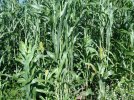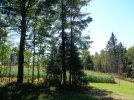nwmn
5 year old buck +
I'm sure this has come up plenty in light of the current environment.
Due to costs of inputs I've decided to construct plots consisting of high diversity mixes with little to to no inputs while hoping to smother weeds and build soil.
I've got tons of acreage to work with, so I feel providing many acres of 'ok' food will be adequate, while focusing on a few acres of managed plots including sugar beets and corn.
My high diverse mix ideas are:
Flowering mix - buckwheat, sunflowers, canola, crimson clover, and hairy vetch.
Legume/forage mix- cowpeas, sunflowers, soybeans, sunn hemp, buckwheat, and maybe add in corn for climbing structure.
Anybody heading this direction? Any tweaks to seed mixes? I want a flowering mix so I have some nice aesthetics as well as serving a purpose.
Due to costs of inputs I've decided to construct plots consisting of high diversity mixes with little to to no inputs while hoping to smother weeds and build soil.
I've got tons of acreage to work with, so I feel providing many acres of 'ok' food will be adequate, while focusing on a few acres of managed plots including sugar beets and corn.
My high diverse mix ideas are:
Flowering mix - buckwheat, sunflowers, canola, crimson clover, and hairy vetch.
Legume/forage mix- cowpeas, sunflowers, soybeans, sunn hemp, buckwheat, and maybe add in corn for climbing structure.
Anybody heading this direction? Any tweaks to seed mixes? I want a flowering mix so I have some nice aesthetics as well as serving a purpose.

